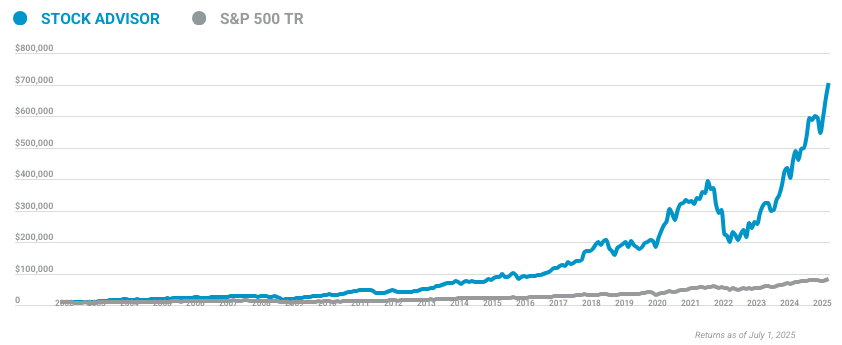2021 was a record year for investment and cryptocurrency scams. Over 81,500 investment scams were reported to the government that year -- and those cases resulted in a loss of nearly $1.8 billion. 2022 is on pace to exceed those numbers.
Over 46,000 people have reported cryptocurrency scams between the beginning of 2021 and March 2022. In that year alone, $680 million was reported lost from crypto scams. Another $329 million has been lost to crypto scams in the first three months of 2022.
The Motley Fool surveyed American adults that had been targeted by an investment or cryptocurrency scam and dug into data gathered by the Federal Trade Commission (FTC) to find out more about this type of fraud.
We found that the use of cryptocurrency and social media by scammers has skyrocketed, many people don't report when they're targeted by a scam, and almost 75% of people targeted by fraud or a scam are less likely to invest in the future.
Key findings
- 2022 will be a record year for investment fraud: 26,209 investment scams (of which some crypto scams are a subset) were reported to the FTC in the first quarter of 2022, and victims lost nearly $672 million in that quarter alone. Reports, the percentage of reports that reported a loss, median losses, and total losses are on pace to exceed those reported in 2021, which significantly surpassed 2020 numbers.
- Crypto scams continue to grow: Americans reported losing $680 million as a result of cryptocurrency scams in 2021, up from $12 million in 2018. In the first quarter of 2022 Americans reported losing $329 million due to crypto scams, putting this year on a record pace. Most crypto scams are a subset of investment scams.
- Fraud and scam education needs to improve: 28% of people targeted by scams said financial and government institutions have done a good or very good job educating the public about investment and cryptocurrency scams. 47% said financial and government institutions have done a poor or very poor job.
- Scams are going unreported: Just 42% of those targeted by an investment or cryptocurrency scam filed a report with the government. Of those that didn’t file a report, 35% said they didn’t know they could.
- Scams make victims wary of investing: 55% of people targeted by an investment scam have since invested, although 54% of those targeted say they’re less likely to invest in the future.
What is an investment scam?
Investment scams aim to get individuals or businesses to provide money -- often cryptocurrency -- for an investment that will allegedly generate large returns.
There are many types of investment scams, but they generally lure victims with promises of quick and large profits, only for victims to put up funds that are never seen again.
In this article, we use the terms "fraud" and "scam" interchangeably, because that's how the FTC reports their data.
Americans lost over $1.7 billion to investment fraud and scams in 2021
2021 saw over 81,000 investment fraud cases reported and over 59,000 cases involving a loss, shattering records set in 2020.
2022 is on pace to be another record-setting year for nearly every metric.
Between 2017 and the first quarter of 2022, all measures of investment fraud have increased consistently.
| Year | All scam reports with financial loss | All scam reports | Percent of scam reports reporting a loss | Median loss of scams reporting a loss | Total losses |
|---|---|---|---|---|---|
| 2017 | 7,343 | 15,747 | 47% | $416 | $50,495,073 |
| 2018 | 8,391 | 14,792 | 57% | $566 | $94,272,660 |
| 2019 | 11,783 | 18,458 | 64% | $738 | $181,746,812 |
| 2020 | 20,805 | 27,204 | 76% | $1,573 | $420,353,432 |
| 2021 | 59,156 | 81,490 | 73% | $2,931 | $1,768,101,764 |
| 2022 Q1 | 17,675 | 26,205 | 67% | $3,250 | $671,975,504 |
People aged 30–39 are most likely to report investment fraud
Between 2017 and the first quarter of 2022, Americans 30–39 years of age reported 21,128 investment scams, the most of any 10-year age band. Americans aged 20–29 followed with 18,463 reported scams.
Even though the 20–29 age group reported the second most cases, they only had the fifth-highest losses -- people aged 40–49, 50–59, and 60–69 all reported higher losses from fewer reported cases.
Cryptocurrency is the top payment method for investment scams and fraud
In 2021, cryptocurrency remained the most common payment method used in investment scams and fraud.
There were 45,228 reported cases of money lost in an investment scam via cryptocurrency, up from 9,542 reported cases using cryptocurrency to transfer funds in 2020, and 1,206 in 2019.
In 2019, wire transfer was the most frequently used method of payment. But the ease of moving money with cryptocurrency and the increasing popularity of crypto as an investment tool have made it a prime target for scams.
Editor's note: cryptocurrency scams are a subset of investment scams in the FTC data.
Americans lost $680 million to crypto fraud in 2021
In 2021, Americans reported losing $680 million to crypto fraud, according to the FTC. Another $329 million has been reported lost in the first quarter of 2022 alone.
From the beginning of 2021 through March 2022, over 46,00 people have reported losses as a result of crypto scams. More than $1 billion has been reported lost overall, with a median loss of $2,600.
Crypto losses have skyrocketed in recent years. Losses from crypto fraud in 2021 were over 56 times higher than they were in 2018.
| Year | Reported crypto fraud losses |
|---|---|
| 2018 | $12,000,000 |
| 2019 | $33,000,000 |
| 2020 | $130,000,000 |
| 2021 | $680,000,000 |
| Q1 2022 | $329,000,000 |
Scammers are increasingly relying on social media to reach targets.
| Year | Percentage of scams that used crypto as a payment method that started on social media |
|---|---|
| 2018 | 11% |
| 2019 | 18% |
| 2020 | 37% |
| January 2021 to March 2022 | 49% |
Instagram and Facebook are the social media platforms victims most commonly report.
| Platform used by crypto scammers | Percentage of scams delivered by social media platform, January 2021 to March 2022 |
|---|---|
| 32% | |
| 26% | |
| 9% | |
| Telegram | 7% |
The most costly crypto scams come in the form of an investment-related scam, with a median loss of $575. Romance scams involving crypto are the second most costly, with a median reported loss of $185.
| Top frauds reported by media cryptocurrency losses | Median losses, January 2021 to March 2022 |
|---|---|
| Investment-related fraud | $575 |
| Romance scams | $185 |
| Business imposters | $93 |
| Government imposters | $40 |
People in their 30s and 40s are most likely to report losses from crypto investment scams
Between the start of 2021 through March 2022, 35% of people aged 30–39 that reported a loss via fraud lost cryptocurrency.
Despite cryptocurrency seemingly being most popular with younger investors, those between 20 and 29 years old were only the fourth-most likely age band to report losing cryptocurrency via fraud.
That age group also had the second-lowest median loss in cryptocurrency: $1,600. Americans aged 70–79 had the highest median loss in crypto -- $11,708 -- but were also the second-least likely to say they lost crypto via fraud.
Overall, Americans between 30 and 59 years old were most likely to have lost cryptocurrency as a result of a scam while older Americans reported higher median crypto losses.
| Age group | Percentage of all reports with losses, January 2021 to March 2022 | Median losses |
|---|---|---|
| 18–19 | 12% | $1,000 |
| 20–29 | 23% | $1,600 |
| 30–39 | 35% | $2,500 |
| 40–49 | 33% | $3,200 |
| 50–59 | 28% | $5,000 |
| 60–69 | 19% | $8,500 |
| 70–79 | 10% | $11,708 |
| 80 and over | 2% | $8,100 |
Social media is the most common contact method for investment scams
Recently, scammers have used social media and messaging apps, sometimes posing as celebrities, to reach out to investors and promise them high returns for a huge upfront payment and subsequent fees.
Websites and apps have also risen in popularity over the past year, overtaking the nebulous "other" category in 2020.
Here are some signs of an investment scam to watch out for:
- Being unable to determine an alleged broker's physical location.
- Being asked to deposit money (especially cryptocurrency) upfront.
- Communicating solely through social media or a messaging app.
- Being promised returns that are too good to be true.
28% of respondents are happy with investment fraud education
Editor's note: In the following sections, we talk about people who have been targeted by scams. This includes everyone who responded to our survey, whether they lost money to the scam or not. When we're talking about respondents who actually lost money to the scam, we'll say "victims" or "those who lost money to scams."
Forty-seven percent of those targeted by investment or cryptocurrency scams surveyed by The Motley Fool said financial institutions and the government have done a poor or very poor job educating the public about those types of scams. That’s up from 29% in 2021.
Just 28% said those groups had done a good or very good job.
| How well do you feel that financial and government institutions have educated the public about investment and cryptocurrency fraud/scams? (This includes identifying, reporting, and recovering from these scams.) | 2021 | 2022 |
|---|---|---|
| They've done a very poor job | 13% | 19% |
| They've done a poor job | 16% | 28% |
| They've done an OK job | 26% | 25% |
| They've done a good job | 20% | 16% |
| They've done a very good job | 25% | 12% |
56% of Baby Boomers said financial and government institutions have done a poor job
Baby Boomers were most critical of fraud education provided by financial and government institutions, with 19% saying they had done a very poor job and 38% saying they had done a poor job.
Millennials were the most positive about how those actors had done in educating the public.
| How well do you feel that financial and government institutions have educated the public about investment and cryptocurrency fraud/scams? (This includes identifying, reporting, and recovering from these scams.) | They've done a very poor job | They've done a poor job | They've done an OK job | They've done a good job | They've done a very good job |
|---|---|---|---|---|---|
| Silent Generation | 0% | 0% | 67% | 0% | 33% |
| Baby Boomers | 19% | 38% | 19% | 19% | 6% |
| Gen X | 26% | 26% | 23% | 14% | 10% |
| Millennials | 20% | 29% | 20% | 18% | 13% |
| Gen Z | 12% | 23% | 41% | 12% | 11% |
| All respondents | 19% | 28% | 25% | 16% | 12% |
42% of investment scam targets filed a report with the government
Of people targeted by investment or cryptocurrency scams surveyed by The Motley Fool, 42% reported the scam to the government and 58% did not.
Reporting scams to the government gives you a chance to get your money back if you suffered losses. It also helps law enforcement better investigate and stop scammers and fraudsters. Reports give authorities a fuller picture of what types of scams and fraud are prevalent, which lets them better educate the public about how to spot and avoid them.
69% of scammed Baby Boomers didn’t file a report with the government
Only 69% of Baby Boomers surveyed said they reported the scam they were a target of to the government, making them least likely to report out of all recent. generations
Millennials had the highest reporting percentage, followed by Gen X and Gen Z.
| Did you report the scam or fraud to a government agency like the FTC or SEC? | Yes | No |
|---|---|---|
| Silent Generation | 0% | 100% |
| Baby Boomers | 31% | 69% |
| Gen X | 41% | 59% |
| Millennials | 45% | 55% |
| Gen Z | 39% | 61% |
Of those that didn’t file a report, 35% didn’t know they could
Thirty-five percent of respondents who failed to file a report said they didn’t know they could, Thirty-eight percent said they didn’t see the point of filing or didn’t think it was worthwhile, and 18% said they didn’t understand how to file.
| Why did you not file a report? | 2021 | 2022 |
|---|---|---|
| I didn't know I could file a report for investment or crypto fraud or scams | 37% | 35% |
| I didn't see the point of reporting or didn't think it was worthwhile | 31% | 38% |
| I didn't understand how to file a report | 27% | 18% |
| Other | 5% | 9% |
For those who are unaware of or unsure about the reporting process, you can start at reportfraud.ftc.gov. You can report anything you feel may be a scam or fraud and provide as much or as little information as you’d like.
If you don’t see the point of reporting a scam, remember that doing so can help recoup losses you’ve suffered, stop bad actors, and improve awareness of scams and frauds.
50% of Baby Boomers didn’t see the point of reporting, more than any other generation
Among those that didn’t file a report, 50% of Baby Boomers said they didn’t see the point, compared to 35% of Gen X, 36% of Millennials, and 42% of Gen Z.
| Why did you not file a report? | I didn't see the point of reporting or didn't think it was worthwhile | I didn't know I could file a report for investment or crypto fraud or scams | I didn't understand how to file a report | Other |
|---|---|---|---|---|
| Silent Generation | 67% | 33% | 0% | 0% |
| Baby Boomers | 50% | 9% | 27% | 14% |
| Gen X | 35% | 46% | 13% | 6% |
| Millennials | 36% | 35% | 19% | 10% |
| Gen Z | 42% | 36% | 16% | 6% |
| All respondents | 38% | 35% | 18% | 9% |
Baby Boomers were most likely to know they could file a report for investment scams, yet were most likely to opt to not do so because they didn’t think it would be worthwhile.
Generations younger than Baby Boomers were more likely to know how to file a report and think doing so was worthwhile, but were less likely to know that they could file one.
55% of people targeted by an investment scam have since made investments
Fifty-five percent of people targeted by an investment or cryptocurrency scam, including those who hadn’t lost money, have since made an investment, according to The Motley Fool's survey.
Notably, a higher percentage of those who had lost money reported investing -- 66% of those who had suffered a loss through an investment or cryptocurrency scam said they had invested since being scammed, compared to 34% who said they were targeted by a scam but didn’t lose money.
67% of scam targets subsequently invested in cryptocurrency, 60% in stocks
Among those who have invested since being targeted by investment and cryptocurrency scams, 67% invested in cryptocurrency, the most popular investment, and 60% invested in individual stocks, the second most popular investment among that group.
| What kind of investments have you made since being targeted? | 2021 | 2022 |
|---|---|---|
| Individual stocks | 48% | 60% |
| Bonds | 42% | 28% |
| ETFs | 28% | 31% |
| Index fund | 31% | 29% |
| Mutual fund | 51% | 36% |
| Cryptocurrency | 58% | 67% |
| Other | 2% | 3% |
Those who lost money as a result of a scam were more likely to invest in cryptocurrency than those who hadn’t and were less likely to invest in a mutual fund.
| What kind of investments have you made since being targeted? | Individual stocks | Bonds | ETFs | Index fund | Mutual fund | Cryptocurrency | Other |
|---|---|---|---|---|---|---|---|
| Scam targets who lost money | 56.52% | 29.35% | 28.26% | 29.89% | 36.96% | 71.74% | 1.09% |
| Scam targets who did not lose money | 65.96% | 25.53% | 35.11% | 26.60% | 34.04% | 57.45% | 5.32% |
54% of those targeted by an investment or cryptocurrency scam said they’re less likely to invest
Among those who were targeted by an investment scam, including both those who had and hadn’t suffered losses, 54% said they were less likely to invest in the future. 58% said the same about cryptocurrency after a crypto scam.
How to spot a scam and how to report it
With investment scams on the rise, it’s important that the public knows how to spot and report a scam.
Investment scams come in many forms and are constantly changing to keep up with trends and current events. Cryptocurrency scams in particular are increasingly popular, and more scammers are using social media, websites, and apps to target the public.
To avoid getting scammed, follow a few rules of thumb recommended by the FTC:
- Be wary of opportunities that seem too good to be true. If it is, it’s usually a scam.
- Do your research. Don't invest in something you don’t understand or haven’t heard of. If you’re approached about a company or cryptocurrency that’s new to you, the FTC recommends that you search for it online along with “scam,” “review,” or “complaint.”
- Avoid investment opportunities that require you to pay by cryptocurrency, wire transfer, or gift card. Doing so will make it extremely difficult to get your money back.
If you’ve been targeted by a scam, make sure you report it at reportfraud.ftc.gov, even if you haven’t lost any money. If you've lost money as a result of an investment scam, reporting it is the best way to have a chance at recouping your losses.
Outside experts weigh in

Cristian Tiu, PhD
What signs should investors watch for that may indicate an investment or crypto scam?
There is a lot to say about both. In general, most crypto scams would involve sending payment to an address (do not if you do not know what that is with 100% certainty!), being directed to sites that will ask personal info (like passwords from Coinbase, etc. -- NEVER share passwords because no site randomly decides to "verify" them), do not pay for something from someone you do not know (unlike credit card transactions, you cannot dispute cryptocurrency transactions), do not send money/account info to get "verified" with the expectation you will receive something (that's a scam, most likely). Most of these scams have a cash version.
Don't invest in response to email from an unknown source, or by links from Twitter, etc.
Investment scams are another area entirely. But in general, when promised a hefty return, it is useful to ask yourself the question "what am I doing to deserve this money?" I mean, is capital really expensive to come by? Am I skilled at identifying the best investments and that is why I can get them for cheap? How do I contribute? If this answer is unclear, it's a scam.
In general, buy from reputable places (known brokerage firms, websites that are reputable), understand the risk (initial coin offerings can go to zero easily) and understand the product (do I need to maintain a margin account? How large?).
If someone realizes that they're being scammed, what should they do?
Police, FBI, or reportfraud.ftc.gov for crypto scams.
There was a huge spike in investment-related scams in 2020. Why do you think we saw such an increase in 2020, and do you anticipate a continuation in 2021 and beyond?
Everyone stayed home, including those who scam, so there was more time on their hands. Also, everyone had to overly rely on technology, so we all were more likely to read email, click on links etc.
I expect scams to continue, although perhaps at a lower rate. While we may be on our phones and computers less, software that allows snooping or launching ransomware attacks, etc. is more and more easily available on the dark net, so more and more thieves may decide to buy and use this software.
Who has a responsibility to educate consumers about these kinds of scams?
Consumers have the responsibility to educate themselves. They should not be afraid to ask questions, do their research, take free courses online and at universities. The government should sponsor and encourage such programs. Financial literacy, also, should be part of a person's credit score.
Anything else to add about investing scams?
Do not make the assumption that cryptocurrency payments are private. In fact, they can be undone, as it happened with a ransom paid recently.

Veljko Fotak
What signs should investors watch for that may indicate an investment or crypto scam?
The old adage --if it sounds too good to be true, it probably is -- fully applies here.
Generally, watch out for anyone who offers guarantees, especially in this market. Anyone "guaranteeing" that they will generate market beating returns is lying -- either to themselves or to their investors.
If someone realizes that they're being scammed, what should they do?
Contact the Consumer Financial Protection Bureau and submit a report to the Federal Trade Commission. Both have very neat websites with the ability to harvest reports by victims. And both offer plenty of resources and information on the most common scams and on what to do if one falls victim.
There was a huge spike in investment-related scams in 2020. Why do you think we saw such an increase in 2020, and do you anticipate a continuation in 2021 and beyond?
I do not believe there was a significant rise in the frequency of scams –- rather, there were market movements that revealed the scams. Truth is, scams are always there. But they are often revealed during times of market turmoil. As Warren Buffett famously said -- "Only when the tide goes out do you discover who's been swimming naked."
While I don't think the actual rate of scams is the main driver here, the influx of unsophisticated traders into markets might have moved the needle a bit -- let's just say the supply of scams has not necessarily increased, but the "demand" for them might have. Not that young, inexperienced traders are begging to be scammed -- no one wants to be the victim, of course. But the prevailing mentality among a certain group of investors who have become active for the first time during the pandemic is one of "big or bust." The reddit investor is not looking for safe, conservative, stable investments to fund their retirement. Rather, the goal is to find the next big thing that will offer lottery-like payoffs.
Clearly, that kind of mentality offers fertile grounds for scams. And let's be honest –- the current ethos among tech start-ups is "fake it until you make it." Sometimes the line between the genius, daring entrepreneurs we celebrate and the scammers we despise is a lot thinner than we would like to recognize.
Who has a responsibility to educate consumers about these kinds of scams?
First and foremost, it falls on educational institutions. Higher ed has a responsibility to impart technical knowledge—to give all students at least a basic understanding of how markets and financial instruments work. We live in a society in which we are all captive investors. There is no opt out here -- so everyone needs to have at least a basic working knowledge of personal finance.
Yet, even before that, primary education institutions have to sharpen their teaching of critical thinking skills. There is a parallel here between individuals unable to spot a blatant financial scam and individuals believing outlandish political claims or nonsensical "fake news" about the pandemic.
Regulators also have to play a role. Rational decision making is predicated on having access to timely and truthful information -- regulators must ensure that is the case.
Yet there is no silver bullet. It is impossible to protect investors from their own greed.
Anything else to add about investing scams?
I think one aspect that often gets lost is the moral argument. The sad reality is that we in higher education, especially in business schools, have not done enough to emphasize the moral side of business and investing.
People fall for scams, often, because of greed. Not always, of course -- there are plenty of blameless, innocent victims. Yet, oftentimes, scam targets are well aware of being involved with a scam. They just don't realize they are themselves the victims. Look at Bernie Madoff, the mind behind the largest Ponzi scheme in the history of financial markets. Many of his clients knew there was no legal, legitimate way to generate the returns he had been promising. Yet, they were satisfied by hints of insider contacts and trading on insider information. They were very happy to invest with Mr. Madoff even though they thought he was breaking the law. When they found out he was, indeed, breaking the law, but at their expense, they were outraged.
And, to be clear, I am not saying that applies to all of his victims -- far from it. But certainly the large, sophisticated investment funds who were playing along had enough skill and expertise to know something was off. They chose to ignore it. The best way to avoid being mugged is to walk on the bright side of the road.

Andrei Simonov
The proposed scam investments share one unique characteristic: they all appeal to greed. They promise unrealistically high rates of returns fast.
Many scammers explain that such returns are achieved because the company, investment, or cryptocoin invents or uses new technology or because "we live through the technology revolution." Often, scammers refer to the high performance of "similar" companies or instruments (like Bitcoin), hiding the downside or extreme volatility. For example, they can say that Etherium went from $200 to $4,000 in less than a year but ignore that it dropped 50% after reaching the peak.
How to prevent those scams from ruining the investors? For public companies, go to Edgar.gov and study the SEC filings. Pay attention to risk disclosures. For crypto-assets, unless you feel that you know the space, you should stay away. Most of the crypto assets are not connected with assets or future cash flows. In other words, it does not have any intrinsic value. The asset's value is determined by supply and demand driven by the expectation of the future price.
Dogecoin here is the case in point. The cryptocurrency that was created as a joke reach a capitalization of $85 billion. The best analogy for such assets is the price of rare objects like black tulip bulbs, baseball cards, or defunct Enron stock certificates.
It is important to note that at least some digital coins can be considered by SEC as securities offerings. It means that there should be some information on those assets in the public domain above what the creators put on their web pages. However, even in those cases, the number of violations is enormous and exceeds the violations in the normal IPO process by orders of
magnitude.
Bottom line: follow the Buffett rule and invest only in the assets you understand.

Josh White
What signs should investors watch for that may indicate an investment or crypto scam?
In penny stocks, crypto, or any potential investment, I would encourage investors to watch out for some well-known red flags of fraud. These include claims of high guaranteed returns or assurances that the investment carries little or no risk. Fraudulent promoters often use language such as "zero risk" or "guaranteed profit" in their sales pitch.
Crypto assets certainly have substantial risk, especially since their value is not tied to an underlying business model that generates cash flows that can be reported on a financial statement and audited by third parties. Even a well-accepted cryptocurrency like Bitcoin is subject to highly volatile returns. In the past 90 days, its price has dropped from a high of $63,000 in April to just over $34,000 as I type these notes. That is a drop of −46% in a very short period. Coins with a smaller market capitalization, lower following, and those that are more difficult to trade (e.g., not available on Coinbase), will likely experience even larger percentage changes in their price.
Other hallmarks of investment or crypto scams are unsolicited sales pitches, pressure to invest right away, claims that "everyone is buying it," and sellers that are unregistered. Investors can check an investment professional's background, registration status, and other information at this SEC website: www.Investor.gov. If it sounds too good to be true, it probably is.
I would encourage potential investors to exercise extreme caution when investing in crypto assets that have a very small market capitalization. Similar to penny stocks, these are preferred vehicles for conducting fraud because small changes in trading can result in large price swings. Fraudulent promoters can employ classic pump-and-dump schemes by purchasing a large amount of a token with a small market capitalization that is thinly traded (which we call illiquid).
My analysis of penny stocks shows that vulnerable investors—older, low income, low education—tend to do worse in promoted stocks. I suspect the same is true in crypto scams.
There was a huge spike in investment-related scams in 2020. Why do you think we saw such an increase in 2020, and do you anticipate a continuation in 2021 and beyond?
The spike in scams in 2020 is likely tied to other factors pushing up all asset prices (homes, stocks, collectibles, etc.). We had unprecedented government stimulus, which injected trillions of dollars into the economy. This stimulus resulted in an incredible amount of money stock in the economy. The graph of M1 Money Stock at the St. Louis Fed paints some of this picture—there were large amounts of cash placed in the hands of potential investors.
Couple this cash infusion with advances in technology and platforms that allow for trading in crypto assets, as well as mature social media platforms like Twitter where well-known celebrities were touting their support for crypto assets, and this makes for a great opportunity for scammers. I also believe that widely publicized news stories about enormous investment returns in meme stocks and other asset classes raised anxieties among individuals about missing out on investment returns. Scammers are constantly trying to exploit the so-called "fear of missing out" or "FOMO."
Who has a responsibility to educate consumers about these kinds of scams?
There are several regulators trying to enforce laws in this space, including the SEC, CFTC, IRS, Treasury's FinCEN, and even the Department of Justice. However, the decentralized nature of cryptocurrency makes them both appealing to investors and simultaneously challenging for regulators to enforce. So, the role of investor education is paramount for crypto assets.
The SEC regulates and enforces securities laws for start-ups trying to fund their business through initial coin offerings (ICOs). The SEC's Office of Investor Education (OIEA) has put out investor alerts on trading schemes and regularly issues alerts on investment fraud and scams.
The Commodity Futures Trading Commission (CFTC) plays a big role in regulating and enforcing crytpocurrencies, which are treated like commodities. The CFTC also has a dedicated website for crypto asset education, and provides advisories, primers/backgrounds, brochures, and even podcasts.
The Department of Justice conducts criminal investigations into wash trading or manipulation in this space. The Cyber-Digital Task Force published a nice report last year on their enforcement efforts in the crypto space. However, the DOJ seems to focus more on enforcement than education.
I have also read articles about the DOJ working with Treasury's FinCEN when banks are involved and the CFTC (who regulates derivative trading in Bitcoin and Ether) if the fraudsters use derivatives in their activities.
The Financial Industry Regulatory Authority (FINRA) also provides some crypto education resources.
Anything else to add about investing/crypto scams?
I would just reinforce to investors that crypto assets are highly speculative and, thus, investors should exercise extreme caution and conduct extensive research on both the asset and trading platform before making these investments. If an investor decides they want to invest in a crypto asset and can tolerate the extreme amounts of risk, I would be sure it is part of a well-diversified investment portfolio and consider limiting your holdings to a small fraction of that portfolio due to its return volatility.
Scams are on the rise -- stay vigilant
Unfortunately, investment and cryptocurrency scams aren’t going anywhere. In fact, data over the last few years makes clear that those scams are becoming more prevalent and costly and that scammers are constantly evolving their tactics.
Remaining vigilant, doing your own research before investing, and avoiding overtures that require you to pay by cryptocurrency, wire, or gift card are surefire ways to avoid losses and remain on a path to financial success.
Sources
- Federal Trade Commission (2022). "The Big View: All Sentinel Reports."
- Federal Trade Commission (2022). "FTC Data Shows Huge Spike in Cryptocurrency Investment Scams."
- Federal Trade Commission (2022). "Reports show scammers cashing in on crypto craze."
- Federal Trade Commission (2021). "Spotting cryptocurrency investment scams."
Methodology
The Motley Fool distributed a survey via Pollfish to 500 American adults who had been targeted by investment or cryptocurrency fraud on Jun 29, 2022. Respondents were 58% male and 42% female. Age breakdown was approximately 20% 18-24, 29% 25-34, 34% 35-44, 8% 45-54 and 9% over 54.
The Motley Fool distributed a survey via Pollfish to 500 American adults who had been targeted by investment or cryptocurrency fraud on June 21, 2021. Respondents were 43% female and 57% male. Age breakdown was approximately 14% 18–24, 20% 25–34, 36% 35–44, 16% 45–54, and 14% over 54.
Some percentages may not total to 100% due to rounding.
The Motley Fool has a disclosure policy.


























































